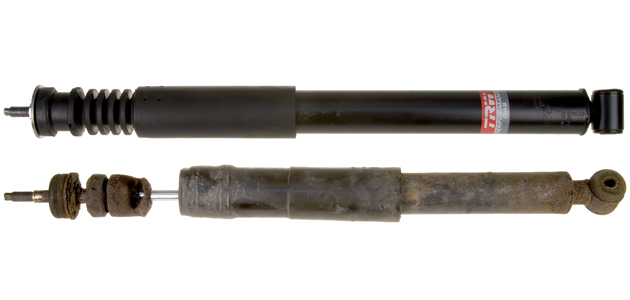
Shock absorbers play a very important role in ensuring the safety of a vehicle. The main function of a shock absorber is to dampen the spring oscillations, and keep the tyres in contact with the road. The only point of contact between a car and the road is four pieces of rubber, each the size of a postcard, and with the bumps and imperfections on our current road surfaces, especially as a result of the poor weather conditions last winter, correct contact with the road surface is even more vital. Over a distance of one mile an average shock absorber will move 4,000 times!
Worn shock absorbers can also cause stress and premature failure on many other parts – from wheel bearings to steering rack and ball joints. Replacing them at the right time could prevent more costly repairs at a later date.
TRW recommends that shocks are replaced in pairs/axle sets, replacing either the front or rear pair at the same time. Shock absorbers with uneven wear or worse still, different types of shock absorber on the same vehicle axle, can severely affect vehicle handling and performance.
 Signs of a worn shock absorber
Signs of a worn shock absorber
Shock absorbers should be checked every 20- 30,000 miles, and replaced every 50-60,000 miles. Visual signs of a worn shock absorber include uneven wear on the tyres and oil leakage around the shock absorber, however there are more checks that can be done including the bounce test or using a dynamometric tester.
Shocking facts!
Worn shock absorbers can affect everything from braking to handling. They can cause:
■ 10% increase in braking distance
■ 15% greater chance of aquaplaning
■ 25% reduction in tyre life
■ Reduced cornering ability
■ Poor ride comfort
■ Increased fuel consumption









